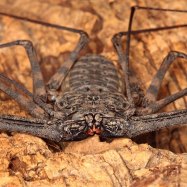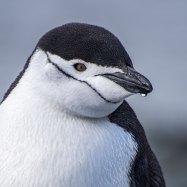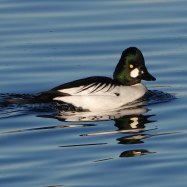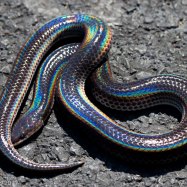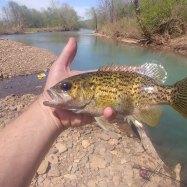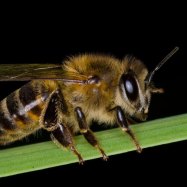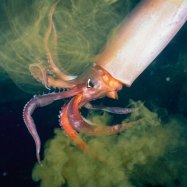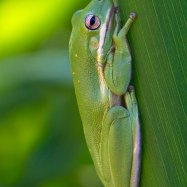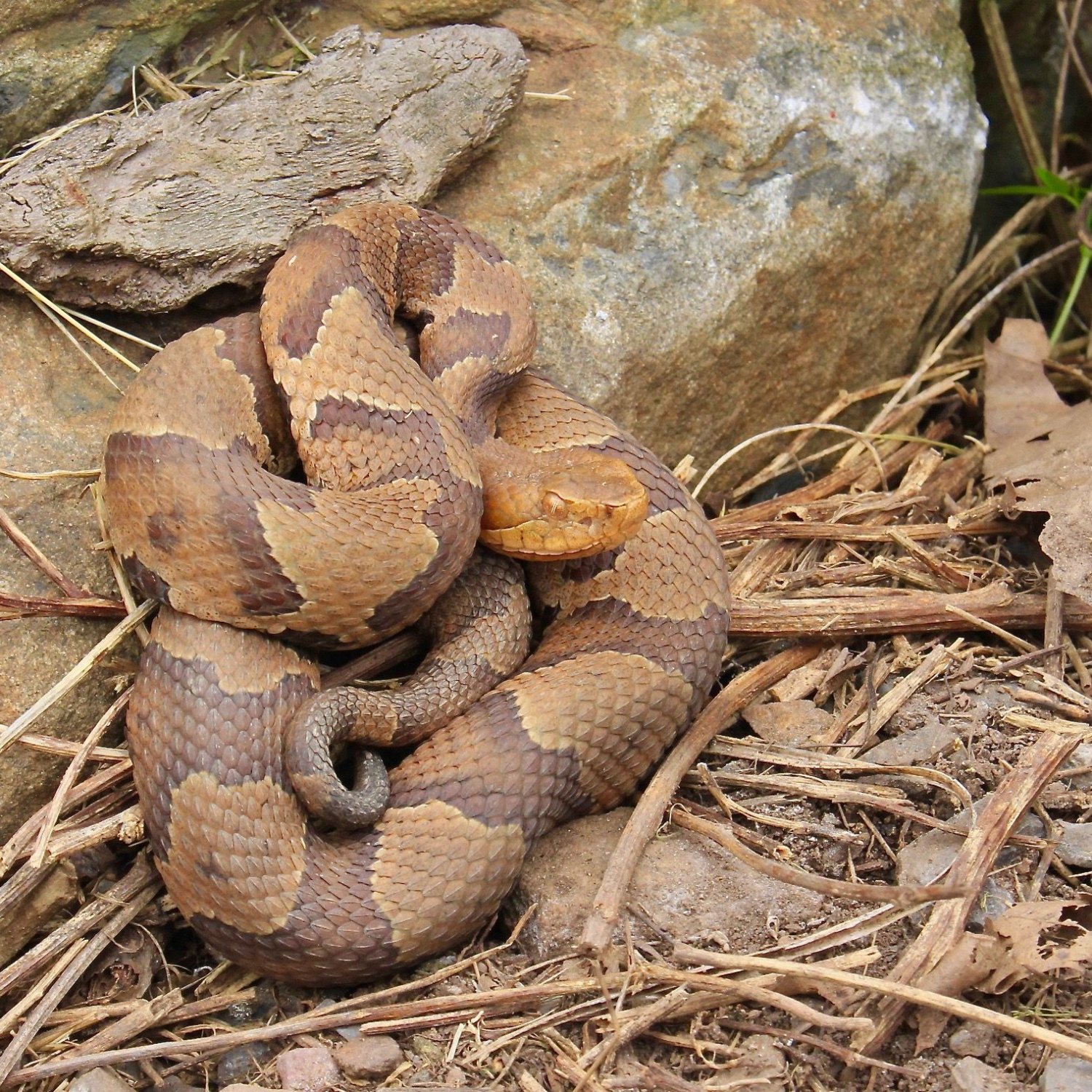
Copperhead
2 to 3 feet
The Copperhead snake is a venomous creature found in the eastern and central parts of the US. With a length of 2 to 3 feet, this medium-sized and stout-bodied snake belongs to the Viperidae family. Beware of their distinct copper-colored head and stay safe when exploring their natural habitat. #Copperhead #VenomousSnake #EasternUS #CentralUS #Viperidae
Animal Details Summary:
Common Name: Copperhead
Kingdom: Animalia
Habitat: Forests, swamps, rocky areas
Introduction
The forests and swamps of North America are home to many beautiful and intriguing creatures. Among them is the copperhead – a venomous snake that has captured the curiosity and fear of humans for centuries.Scientifically known as Agkistrodon contortrix, the copperhead is a member of the Squamata order, which includes other snakes such as cobras and rattlesnakes. Its common name, copperhead, comes from its distinct coppery-brown or reddish-brown coloration Copperhead. But there’s more to this snake than just its color – let’s dive deeper into the world of the copperhead and discover what makes it stand out.
Kingdom Classification
Before we explore the unique features of the copperhead, let’s take a look at its classification within the animal kingdom. The copperhead belongs to the Animalia kingdom, which includes all animals on Earth.Specifically, it falls under the Chordata phylum, which includes all animals that have a spinal cord. This puts it in the same category as animals such as mammals, birds, and fish. Within the Chordata phylum, the copperhead is classified under the Reptilia class, which includes all reptiles.
Habitat and Distribution
The copperhead can be found in various habitats throughout its geographic range, which includes the eastern and central regions of the United States. Its habitat of choice is dense forests, swamps, and rocky areas.Within these habitats, the copperhead can often be found taking shelter under logs or rocks, or even burrowing in the ground Cantil. They are also excellent climbers and can be found resting on tree branches, basking in the sun.
Geographically, the copperhead’s natural habitat covers a wide area, stretching from southern New England to Texas and Florida. However, it is most commonly found in the Appalachian Mountains and the Midwest region of the United States.
Feeding Habits
The copperhead is a carnivorous species, meaning it feeds on other animals for sustenance. Its diet consists mainly of small mammals, such as mice and chipmunks, and sometimes even birds and amphibians. It uses its venom to immobilize and kill its prey, which it then swallows whole.Interestingly, the copperhead has a unique feeding method – it can hunt and swallow its prey in one quick, efficient motion. This is thanks to its hinged jaws, which allow it to open its mouth extremely wide and accommodate larger prey.
Appearance and Body Shape
Out of all the venomous snakes in North America, the copperhead has one of the most distinct appearances. Its coloring is a reddish-brown or coppery-brown, with darker hourglass-shaped markings along its body. Its head is a rich, coppery color, giving it its unique name.In terms of body shape, the copperhead is medium-sized and stout-bodied. It can grow anywhere from 2 to 3 feet in length, making it a relatively small member of the viper family. Its body is also thick and muscular, making it a formidable predator.
Venom and Bite
One of the most intriguing – and feared – features of the copperhead is its venom and bite. Like other members of the viper family, the copperhead is venomous, but its venom is relatively mild compared to other species.The copperhead’s venom contains a cocktail of proteins and enzymes that primarily target the nervous system and cause tissue damage. While its venom is not usually fatal to humans, a bite can still be painful and cause significant swelling and tissue damage. Therefore, it is essential to seek medical attention immediately after a copperhead bite.
Behavioral Patterns
Despite being a venomous snake, the copperhead is generally shy and non-aggressive towards humans. In fact, it is more likely to flee or stay hidden when encountering humans, rather than attack. However, if threatened or provoked, it may become defensive and bite in self-defense.During the summer, the copperhead becomes more active, hunting for food and basking in the sun to regulate its body temperature. In colder months, it hibernates in underground burrows or hidden crevices.
Conservation Status
The copperhead is not listed as an endangered species on the International Union for Conservation of Nature (IUCN) Red List. However, like many other animals, it faces threats such as habitat destruction and fragmentation, human persecution, and road mortality.To help maintain the copperhead’s population, it is imperative to educate the public on the importance of coexisting with these snakes, as well as preserving their natural habitats.
In Conclusion
The copperhead may be a venomous snake, but it is also a fascinating and beautiful creature that plays a crucial role in its ecosystem. From its unique coloration and body shape to its feeding and behavioral patterns, the copperhead stands out as a remarkable species.As we continue to explore and appreciate the natural world, it is essential to approach all animals, including venomous ones, with respect and understanding. By doing so, we can better coexist with these creatures and protect their existence for generations to come.

Copperhead
Animal Details Copperhead - Scientific Name: Agkistrodon contortrix
- Category: Animals C
- Scientific Name: Agkistrodon contortrix
- Common Name: Copperhead
- Kingdom: Animalia
- Phylum: Chordata
- Class: Reptilia
- Order: Squamata
- Family: Viperidae
- Habitat: Forests, swamps, rocky areas
- Feeding Method: Carnivorous
- Geographical Distribution: North America
- Country of Origin: United States
- Location: Eastern and Central United States
- Animal Coloration: Coppery-brown or reddish-brown
- Body Shape: Medium-sized and stout-bodied
- Length: 2 to 3 feet
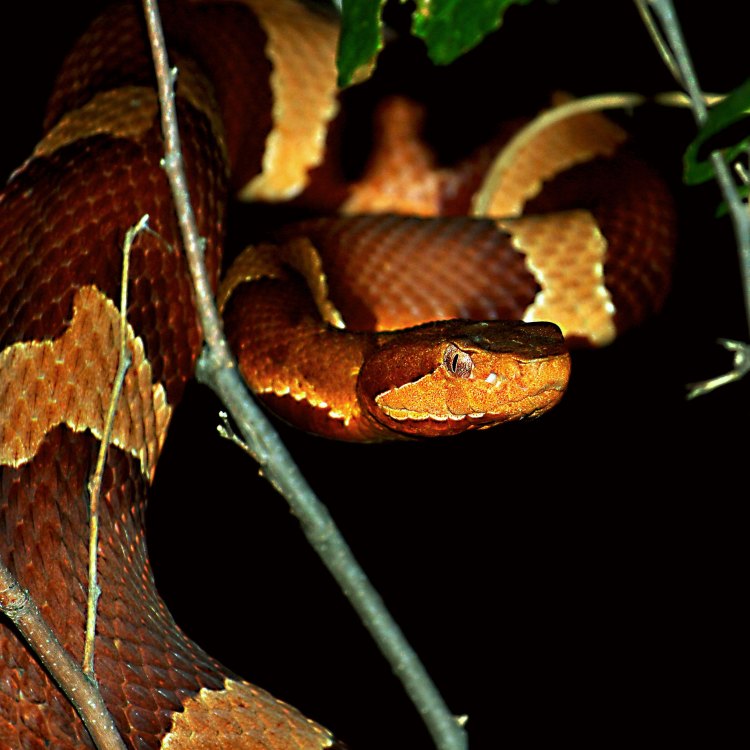
Copperhead
- Adult Size: 2 to 3 feet
- Average Lifespan: Up to 18 years
- Reproduction: Sexual
- Reproductive Behavior: Viviparous (give birth to live young)
- Sound or Call: Rattlesnake-like tail vibration
- Migration Pattern: Non-migratory
- Social Groups: Solitary
- Behavior: Nocturnal and terrestrial
- Threats: Habitat loss and degradation, road mortality, persecution
- Conservation Status: Least Concern
- Impact on Ecosystem: Maintains balance in prey populations
- Human Use: None
- Distinctive Features: Distinct copper-colored head
- Interesting Facts: The copperhead is responsible for the majority of venomous snakebites in the eastern United States
- Predator: Birds of prey, larger snakes
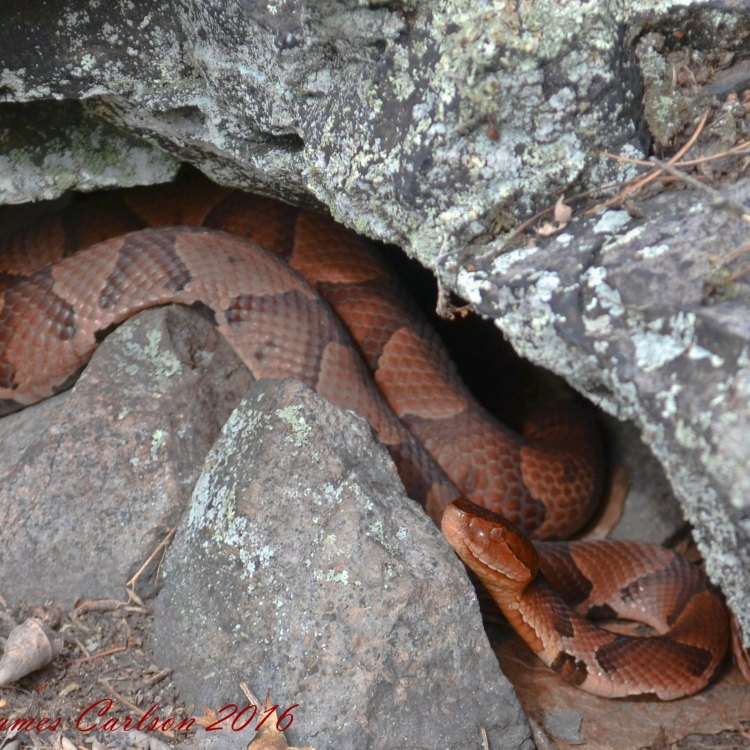
Agkistrodon contortrix
The Mysterious and Misunderstood Copperhead: A Closer Look at its Unique Features
As a reptile enthusiast, I have always been fascinated by the diverse and often misunderstood world of snakes. Among the many species, one particular snake stands out with its distinctive features and interesting behaviors - the Copperhead. This enigmatic creature, with its unique copper-colored head, has a lot more to offer than meets the eye.Let's dive into the world of Copperheads and unravel the mysteries surrounding this fascinating species PeaceOfAnimals.Com.
Size and Lifespan
The Copperhead, scientifically known as Agkistrodon contortrix, is a medium-sized snake native to the eastern and central United States. Fully grown adults usually reach a length of 2 to 3 feet, with females being slightly larger than males. While this may seem small compared to other venomous snakes, Copperheads still command respect and should be handled with caution.But what is truly remarkable about these creatures is their lifespan. Despite being a relatively small snake, Copperheads have an impressive lifespan, with some individuals living up to 18 years in the wild. This longevity is quite rare, as most venomous snakes have a shorter lifespan due to their high metabolic rates.
Reproduction and Behavior
Like most snakes, Copperheads reproduce sexually, with males competing for the attention of females during the breeding season. But what sets Copperheads apart from many other snakes is their reproductive behavior. They are one of the few species of snakes that are viviparous, meaning they give birth to live young instead of laying eggs Clumber Spaniel.Once the females are impregnated, they will carry their developing young inside their bodies until they are born. This process, called ovoviviparity, allows the young Copperheads to receive nourishment from their mother's placenta, increasing their chances of survival.
Sound and Coloration
One of the most distinctive features of Copperheads is their rattlesnake-like tail vibration. While they may not have an actual rattle, they can make a similar sound by vibrating their tails against dry leaves. This behavior is a warning to potential predators, and it is an effective way for the Copperhead to defend itself without expending energy.But what truly captures the attention of many is their unique coloring. As the name suggests, Copperheads have a characteristic copper-colored head that sets them apart from other snakes. This coloration serves as camouflage, allowing them to blend in with their surroundings and ambush their prey.
But why do they have a copper-colored head? Recent studies have shown that this coloration may be a result of their diet, particularly the high concentration of copper in the rodents they prey upon. This phenomenon is known as bioaccumulation, where toxins from prey accumulate in the predator's tissues.
Apart from their distinctive head color, Copperheads also have a beautiful pattern on their body, consisting of reddish-brown crossbands with darker borders. This pattern helps them blend in with fallen leaves and rocks, making them difficult to spot in their natural habitat.
Threats and Conservation Status
Despite being a venomous species, Copperheads have a relatively low conservation status. They are classified as Least Concern by the International Union for Conservation of Nature (IUCN). However, they still face several threats in the wild.Habitat loss and degradation due to urbanization and agricultural practices have resulted in a decline in their population. Road mortality is also a significant threat, with many Copperheads being killed while trying to cross roads. Additionally, these snakes are often persecuted and killed by humans due to fear and misconceptions surrounding them.
But why is it important to protect Copperheads? Apart from their unique and fascinating features, these snakes play a vital role in maintaining balance in their ecosystem. As predators, they control populations of small mammals, keeping them from overpopulating and causing harm to their habitat.
Human Use and Misconceptions
In the animal world, the Copperhead is often portrayed as an aggressive and dangerous snake. However, this couldn't be farther from the truth. The Copperhead is a relatively docile snake and is not aggressive towards humans. In fact, they are known to be shy and will usually try to escape rather than attack when confronted.Moreover, Copperheads are not used for any commercial or medicinal purposes. Their venom is not as potent as some other venomous snakes, and there is no known antivenom for Copperhead bites. This reinforces the importance of protecting these creatures, as they are not only valuable members of their ecosystem but are also not a threat to humans.
Predators
Despite being a venomous species, Copperheads also have their share of predators. Juvenile Copperheads are particularly vulnerable to predation, with birds of prey and larger snakes being their main predators.Birds such as hawks and owls are adept at catching and killing snakes, and Copperheads are no exception. Larger snakes, such as rat snakes, king snakes, and even other species of venomous snakes, also prey on Copperheads.
Final Thoughts
The Copperhead is truly a remarkable and unique species. From its distinctive copper-colored head to its reproductive behavior and important role in its ecosystem, there is much to be learned and appreciated about this enigmatic snake. It is crucial to educate ourselves and others about the Copperhead and dispel common misconceptions to ensure its protection and survival in the wild.Next time you come across a Copperhead in its natural habitat, take a moment to observe and appreciate its unique features and behaviors. Remember, these snakes play an essential role in maintaining the balance of nature, and they should be respected and admired.
So let's continue to explore and appreciate the wonders of the natural world, one snake at a time.
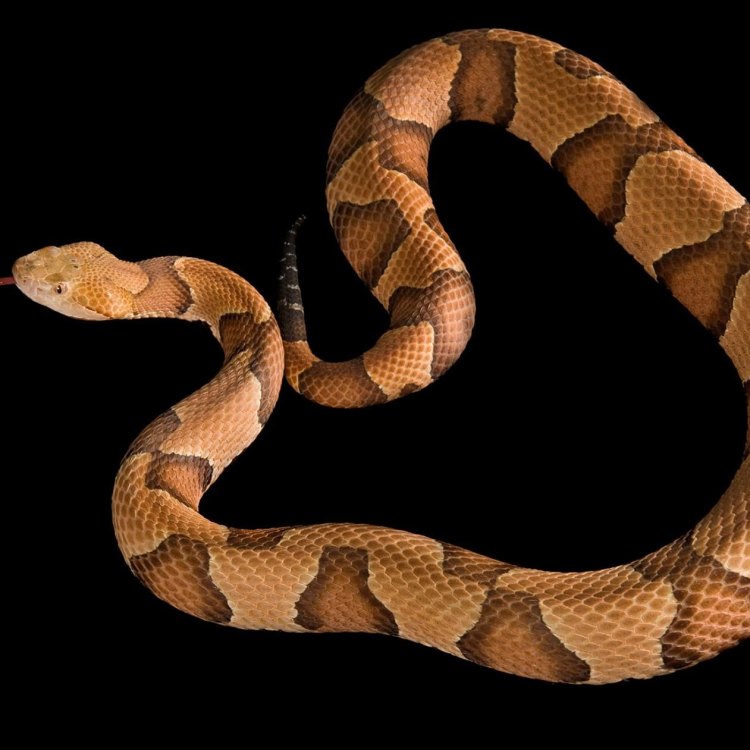
Introduction
Disclaimer: The content provided is for informational purposes only. We cannot guarantee the accuracy of the information on this page 100%. All information provided here may change without prior notice.

